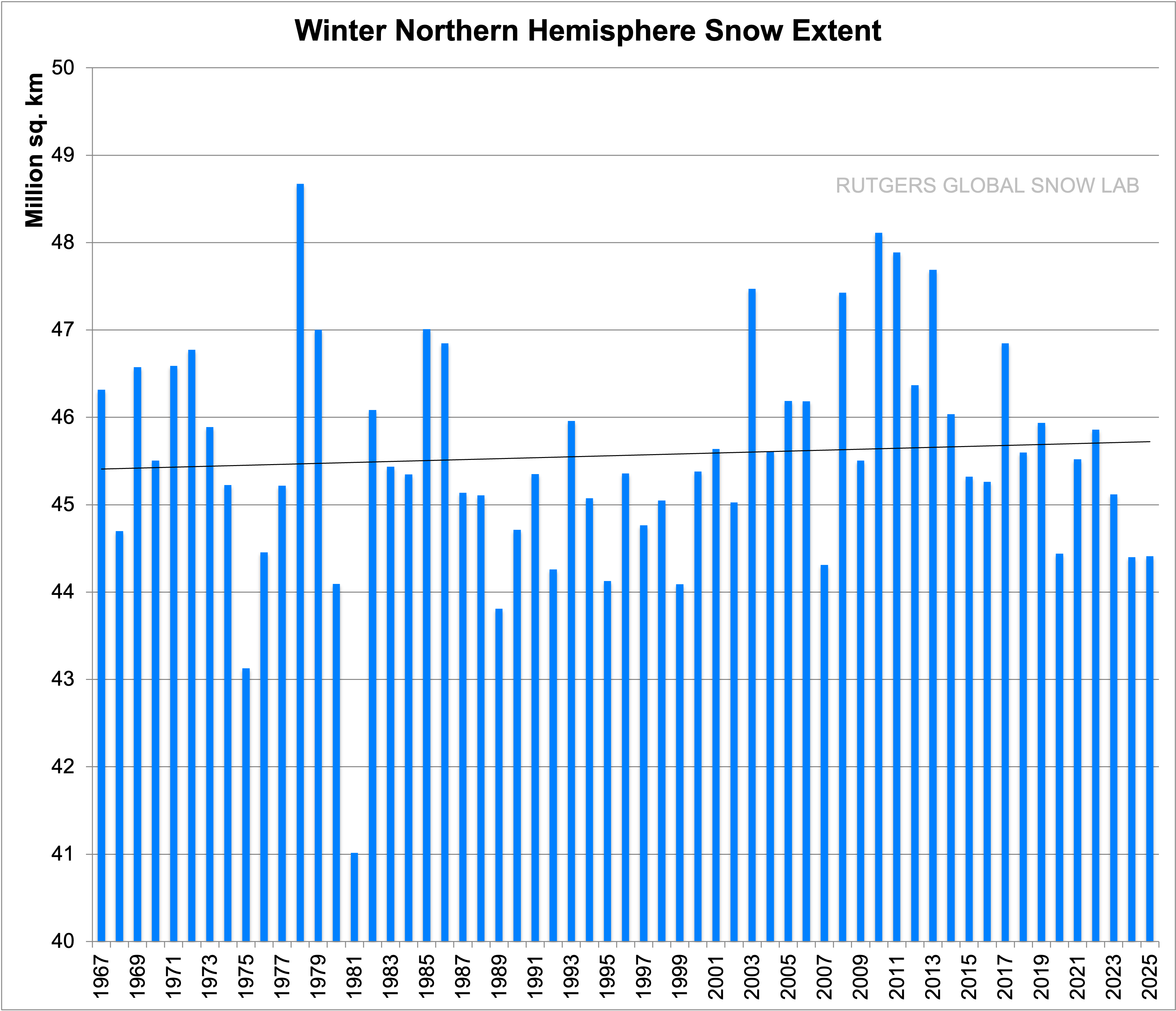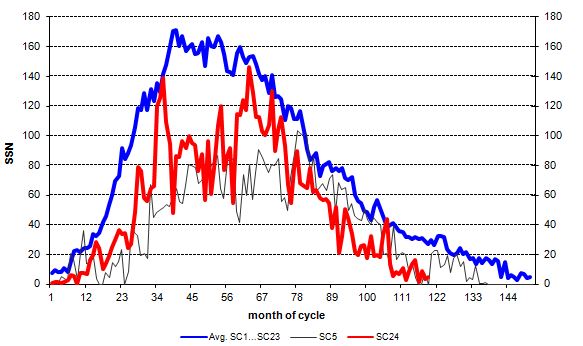Winter has arrived much earlier than normal this year, particularly across North America, where cold records have been shattered.
This Thanksgiving is in fact going down as one of the coldest ever on record across the Northeast. The Washington Post here, for example, reports that Thanksgiving and Black Friday 2018 will be remembered for a record-shattering cold snap across the Northeast United States.”
Also WeatherNation tweeted some impressive record low temperatures being set:
Brrrr! #Record cold low temperatures were observed this morning throughout the Northeast. pic.twitter.com/kjffiAyWRY
— WeatherNation (@WeatherNation) November 22, 2018
For example, Binghamton, New York smashed its earlier record set 10 years earlier by a whopping 12°F!
It was another #record-breaking cold morning throughout the Northeast! Check out some of these temperatures. #NYwx #NJwx #CTwx #RIwx #MAwx pic.twitter.com/dRdWc9JXFC
— WeatherNation (@WeatherNation) November 23, 2018
The Today Show reported that this year’s traditional Macy’s Thanksgiving Day Parade was “the coldest on record”.
Records for November 22 were set in Canada across Ontario as well.
Arctic sea ice, snow and ice cover rebound
Arctic sea ice volume has rebounded and is near normal levels. The sea ice trend has remained stable over the past decade and thus defy all the climate alarmist predictions of an Arctic meltdown.
Chart made by Kirye. Data Source: Danish Meteorological Institute.
Also, according to the University of Rutgers, winter northern hemisphere snow extent has been trending upwards over the past 50 years:

Solar activity lowest level in near 200 years
So what could be behind all the surprising record-setting cold and early wintry weather?
A huge volume of scientific literature suggests that low solar activity is playing a major role. The 20th century saw especially strong solar activity, but it has quieted down substantially since the mid 2000s.
The last solar cycle (no. 24) is now all but officially the weakest in close to 200 years, since Solar Cycle 6.

The plot of Solar Cycle 24, red curve, compared to the mean of the previous 23 solar cycles (blue curve) and the similar Solar Cycle 5, which occurred around the year 1800. Chart: Frank Bosse and Prof. Fritz Vahrenholt.

The above bar chart compares the solar cycles in terms of sunspot number 119 months into the respective cycles. So far the current Solar Cycle 24 has seen an anomaly of -4360 from the mean. Chart: Frank Bosse and Prof. Fritz Vahrenholt
Most researchers believe that the coming solar cycle 25 will also be weaker than normal, meaning the planet is likely now well into a period of low solar cycle activity, which means a cooling climate ahead – as was the case of the Dalton Minimum some 200 years ago.
Little wonder the Arctic has not cooperated with the doomsday, ice-free Arctic scenarios, and instead has stabilized. A cooling North Atlantic will also further enhance the trend towards an Arctic sea ice rebound. The next 10 years will likely settle the dispute of what mostly drove the 20th century warming: The sun or manmade trace gas CO2.






It will be interesting to see how long the minimum will be for this current solar cycle. It is also looking more and more like the AMO is poised to go negative over the next decade.
It really is hilarious to look back at all the predictions of a virtually ice free Arctic, the doomsday tipping point predictions, the “death spiral”, and Hanson’s “we’re toast” statement. James Hanson said the Arctic would be ice free by this year BTW. https://realclimatescience.com/2018/11/arctic-sea-ice-ten-years-past-the-tipping-point/
And yet despite it all the US Governments chosen climate experts have come out with their 4th US Climate Assessment and it is the most hyperbolic piece of excrement they have so far produced.
https://nca2018.globalchange.gov/
And so the climate change alarmist beat goes on and since the Artic is not supporting the meme they will look elsewhere on earth for something to show that we humans are destroying our climate.
In Concord NH, the official high and low temperatures for the 22nd (Thanksgiving) are “missing”. The Concord ASOS (Automated Surface Observing System) failed after its 2351 report on 21st, and was fixed before the 1051 report on the 23rd. It does have a low temperature report for the 23rd – 17F that night. I recorded 4F that dawn….
If the missing data is ignored, this will result in the November average being a bit more that 1F too high. It also means that the cold high temp record for the 22nd remains at 25F instead of the 15F we really had. That’ll have people scratching their heads in a few years. This may be one of the 10 coldest Novembers in the records, but not if that 1F error remains.
A major saving grace is that it was windy throughout nearly all of the period, and the NWS is looking into alternative data. There are several private weather stations in the area, including mine, I’ve offered my data and insights.
MASIE is showing ice extents close to the highest in the last decade. The pace od freezing is impressive.
https://rclutz.files.wordpress.com/2018/11/am2018310to327.gif?w=1000&h=563
https://rclutz.wordpress.com/2018/11/24/arctic-ice-keeps-coming/
Suggest reading this comment and following ones, and the entire post.
https://wattsupwiththat.com/2018/02/09/forecast-for-solar-cycle-25/#comment-2281408
“… points to a cycle 25 a bit stronger than SC24 …/em>”
[Leif Svalgaard ]
It’s called “weather”.
Idiots and fraudsters call it “climate change”.
Forest fires!
Sinking atolls!
Alaskan coastal erosion!
Keeling Curve!
Unprecedented!
…
Um,
…
Squirrels!
When analyzing complex systems with multiple interacting variables it is useful to note the advice of Enrico Fermi who reportedly said “never make something more accurate than absolutely necessary”. My recent paper presented a simple heuristic approach to climate science which plausibly proposed that a Millennial Turning Point (MTP) and peak in solar activity was reached in 1991.see
http://climatesense-norpag.blogspot.com/2018/10/the-millennial-turning-point-solar.html
Zharkova et al 2015 DOI:10.10381/srep15683 says ” Dynamo waves are found generated with close frequencies whose interaction leads to beating effects responsible for the grand cycles (350-400 years) superimposed on a standard 22 year cycle. This approach opens a new era in investigation and confident prediction of solar activity on a millenium timescale. ”
Svalgaard said on WUWT 10/27 2018 “The Wu et al. (2018) reconstruction of the sunspot number since 6755 BC combined with modern Multimessenger proxies covering the 19th century until today goes a long way to reconcile the cosmogenic solar activity record with recent assessments of long-term solar activity.”
This is entirely consistent with my approach and forecasts. The empirical temperature data is clear. The previous millennial cycle temperature peak was at about 990. ( see Fig 3 in the link below)
http://climatesense-norpag.blogspot.com/2017/02/the-coming-cooling-usefully-accurate_17.html
The recent temperature Millennial Turning Point was about 2003/4 ( Fig 4 in link below ) which correlates with the solar millennial activity peak at 1991+/. The cycle is asymmetric with a 650 year +/- down-leg and a 350 +/- year up-leg. The suns magnetic field strength as reflected in its TSI will generally decline (modulated by other shorter term super-imposed solar activity cycles) until about 2650.
The temperature increase since about 1650 is clearly chiefly due to the up- leg in the natural solar activity millennial cycle as shown by Lean 2018 “Estimating Solar Irradiance Since 850 AD” Fig 5……………………………………………….
The establishment’s dangerous global warming meme, the associated IPCC series of reports ,the entire UNFCCC circus, the recent hysterical IPCC SR1.5 proposals and Nordhaus’ recent Nobel prize are founded on two basic errors in scientific judgement. First – the sample size is too small. Most IPCC model studies retrofit from the present back for only 100 – 150 years when the currently most important climate controlling, largest amplitude, solar activity cycle is millennial. This means that all climate model temperature outcomes are too hot and likely fall outside of the real future world. (See Kahneman -. Thinking Fast and Slow p 118) Second – the models make the fundamental scientific error of forecasting straight ahead beyond the Millennial Turning Point (MTP) and peak in solar activity which was reached in 1991.These errors are compounded by confirmation bias and academic consensus group think.”
The capacity of the academic climate community to avoid seeing the simple and blindingly obvious is truly astonishing.It is not obvious what if anything can be done about it
[…] https://notrickszone.com/2018/11/24/record-cold-hits-north-america-arctic-sea-ice-stable-as-solar-act… […]
[…] https://notrickszone.com//record-cold-hits-north-america-/ […]